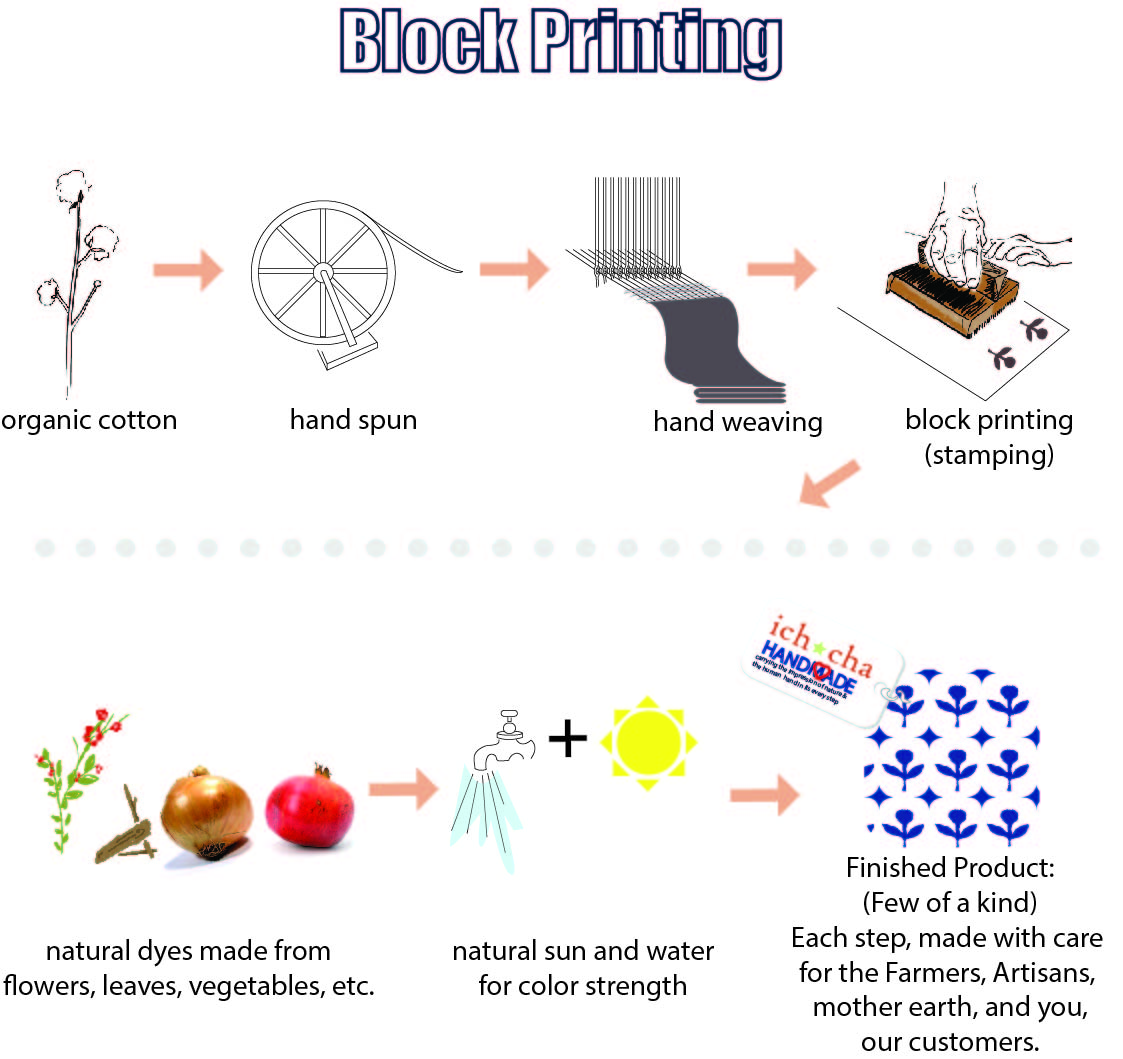How Sustainable is Your Wardrobe?
Posted by The Ichcha Team on 3rd Oct 2024
Our fast fashion culture is destroying the planet. But your clothing choices can help save it. It's all about building a sustainable wardrobe. From minimizing the quantity of clothes you buy to choosing biodegradable fabrics, reducing waste is at the heart of any sustainable wardrobe.
Question is, how sustainable is your wardrobe right now?
To know how sustainable your wardrobe is, ask yourself these questions:
- Do I buy new clothes frequently?
- Do I throw clothes away pretty often?
- How often do I wear the items in my closet?
- Do I only wear clothes a few times before discarding?
- Are there garments in my wardrobe I hardly ever wear?
- Do I always buy into every trend or do I focus on timeless pieces?
- Is my wardrobe full of polyester, nylon, and other synthetic fabrics?
If you answer “yes” to most of these questions, sad to break it to you but your wardrobe isn't sustainable. Don’t fret; we can fix that.
What Next?
Perhaps you've been trying to build a sustainable wardrobe, and it hasn’t been as easy as you thought. Or maybe the prospect of ignoring trends or curbing impulse purchases and buying new outfits for every occasion still holds you back.
We want you to know that the most important thing is that you care, and the effort you're putting into making a change, no matter how small, is significant.
But really, buying sustainable clothing isn't all that difficult. Especially when you realize it benefits you personally and financially. Below, we show you how to build a sustainable wardrobe.
Come along.
How to Make Your Wardrobe Sustainable
1. Consider Every Purchase an Investment
The fast fashion culture promoted by mainstream media has created a high clothing turnover among consumers. We constantly want a wardrobe refresh. So we buy new clothes every week to create new looks, even when there are some in our closet we've barely worn at all.
Think about it; is it not possible we're refreshing a bit too frequently?
To create a sustainable wardrobe, ditch fast fashion for durable, high-quality clothes. By considering every purchase an investment, you tend to choose quality clothing that will last several wears, giving you a high return on your investment.
This helps you in three ways:
- It saves you the hassle of going clothes shopping all the time
- It reduces waste in your closet
- It saves you money
High-quality sustainable clothing may have a higher price tag, but its durability cancels out the financial impact of frequent replacements. So, always think quality over quantity.
2. Buy More Organic Clothing
When you throw your clothes away, 30% end up in landfills. Polyester, nylon, and other synthetic fibres do not readily decompose, so disposing of them contributes significantly to your carbon footprint.
However, organic fabrics such as organic cotton and wool last longer and are biodegradable. This helps you reduce waste, making them the ideal choice when shopping sustainable clothing.
Also, think about how the material is printed. To build a sustainable wardrobe, consider opting for block-printed clothing.
Block printing involves using materials such as wood blocks to transfer ink to fabric. No machines or carbon emissions involved, making it an eco-friendly technique. Plus, we use only plant-based dyes as opposed to the harsh chemicals used in mainstream brands. So, even when you wash your block print fabrics, there's zero chance of releasing toxic materials and dyes into the ocean.

At Ichcha, crafting high-quality block print fabrics is what we do. All our garments are made from organic cotton and hand-dyed using natural dyes. Whether you need cotton block print dresses, blouses, or shorts, you'll find something you'll love to wear for years to come.
3. Get Trans-Seasonal Outfits
Every capsule wardrobe should have pieces that can be worn all year long, whether in summer or winter.
To pull this off, use layering to your advantage. Go for lightweight sweaters or cardigans perfect for spring and fall, but can be layered over other clothes in winter. By so doing, you cut down on excessive shopping whenever seasons change. Have this in mind when making sustainable clothing decisions.
4. Buy Pieces You Can Wear Frequently
Wearing a garment more often and caring for it can reduce its environmental impact by a whopping 75%, according to research.
By choosing sustainable clothing that you can wear more frequently, you reduce the need for too many pieces. This is key to building a capsule wardrobe.
If a certain event requires you to purchase a new dress, go for something you can reuse later. If that's impossible, consider reselling or passing it down after the event.
5. Wear Your Clothes
A sustainable wardrobe is one with little or no waste. This means you're continually using every available piece.
So, before heading to the shop to get a new garment, dig out your wardrobe. Is there nothing you can wear? You do not want them to lie idly while you waste money on new pieces, increasing demand and prompting the fashion industry to produce more, increasing greenhouse gas emissions and waste.
6. Upcycle or Donate Unwanted Clothes
Don't let good clothes go to waste just because you no longer wish to be seen in them. If there are quality pieces lying idly in your wardrobe, Consider selling, donating, or passing them down. You could even upcycle your jean trousers into denim shorts. There are several ways to recycle old clothes.
The idea of a capsule or sustainable wardrobe is to reduce waste while making the most use of what you own.
7. Care for Your Garments to Increase Lifespan
A durable piece of clothing may incur damage and end up in landfills if you fail to care properly for it. Always look at the label to find out the care instructions.
Some garments may damage more quickly if machine-washed or ironed, so you want to follow the instructions to the letter. This may also mean washing your clothes less frequently.
Not only will this ensure the fabric lasts longer, but the color will remain as vibrant as the day you bought it.
8. Shopping Secondhand
Another sustainable clothing choice you can make is to shop second-hand clothing. Although most used clothes available are made of synthetic fibers, this purchasing decision reduces your environmental impact by reducing demand for new clothes. Producing new clothes increases carbon emissions, which inevitably drops when demand drops. This also promotes circular fashion, which itself is a sustainable practice.
9. Ditch Trends for Timeless Pieces
Fashion trends are fleeting. While the pieces may be fun and stylish in the moment, they quickly die out, leaving you with items you never wore more than twice.
This is neither healthy for your wallet nor the planet. Because you'll have to discard and replace.
One of the easiest ways to create a sustainable wardrobe is to go for timeless pieces that transcend trends. Fashion trends come and go, but these staples remain evergreen. Think classic printless t-shirt, straight-leg jeans, little black dresses, etc.
The Bottom Line
Sustainable fashion is no longer just a buzzword but an essential lifestyle we have to practice for our own good. Whatever affects our environment affects us, doesn't it?
And you can make a big difference by opting for organic cotton block print fabrics.
With block print fabrics, shopping sustainably becomes effortless. You know you're buying organic clothing printed via an eco-friendly process and naturally dyed, all from a sustainable brand. From production to consumption and even disposal, each piece is designed to minimize your environmental footprint.
If you're looking to reduce your carbon footprint through your wardrobe choices, visit our online store today. Together, we can achieve a more sustainable future.



